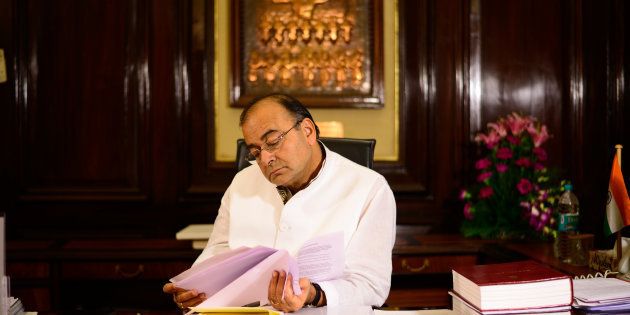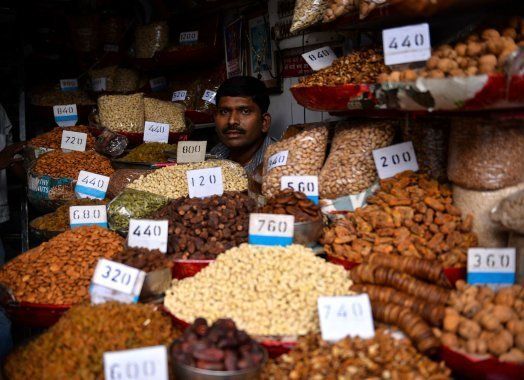
Across the world, implementation of the Goods and Services Tax has led to a short-term increase in inflation. In India too, everyone agrees that there will be inflationary pressure. While the government has tried to reduce the inflationary pressure by keeping petrol, electricity, and alcohol out of the GST for now, the greatest impact will be felt on services.
So far, the GST has been a technical debate in the Parliament, but after the passage of the bill it could increasingly become a political issue on the streets. Congress leader and former finance minister P Chidambaram has already promised a street agitation if the rate is above 18%.
Even an 18% rate will make a lot of things expensive—eating out, phone bills, movies, and a host of services. Currently these services are taxed at 15%. These may directly pinch the upper middle class but will also contribute to all-round inflation.

It is argued that GST-related inflation won't be of the politically painful kind because raw foods aren't taxed anyway. During the debate in the Rajya Sabha yesterday, the finance minister said 54% items in the Consumer Price Index (a measure of inflation) were out of the ambit of the GST.
Yet, the reason why GST could cause all-round inflationary impact is that it covers the services sector, which now contributes to 61% of India's GDP.
The riddle lies in how short the short-term impact could be. Experts say it would be just one year, but it could last as much as three years. The delay in the passage of the bill means that the 1 April deadline for the implementation of the GST is difficult. Both the government and businesses need time to adapt to a completely new method of indirect taxation.
Assuming that GST comes into force by the middle of next year and results in significantly high inflation, its political impact could be felt in the seven state elections in 2018. Coupled with good monsoons and the Seventh Pay Commission, and increased investment, high inflation may affect the Modi government right up to the 2019 general elections.
Gujarat, Himachal Pradesh, Karnataka, Meghalaya, Mizoram, Nagaland, and Tripura will see elections in 2018. The next year, elections are scheduled in Andhra Pradesh, Arunachal Pradesh, Chhattisgarh, Haryana, Odisha, Telangana, Sikkim, Rajasthan, Maharashtra and Madhya Pradesh.
It is this calculation, some say, that the Congress had in mind in delaying the passage of the GST in the Rajya Sabha.
Economists are downplaying the inflationary impact of 18-20% GST rate by calling it 'mild', because an 18% tax rate would be revenue neutral—that is, the government wouldn't be earning more tax than it already does. Yet, the transition process to even a mildly-higher GST could, in the short term, raise prices enough to pinch.
Financial services major Nomura says that the GST could, in the short-term, even affect growth.
In 2015, Malaysia gave itself a year and a half to prepare for the actual implementation of the GST, imposed a price-control law, kept essential items out of the GST, and still saw a sharp rise in inflation for a year. In February 2016, inflation had hit a seven-year peak, but has moderated since then. There were even street protests by owners of small and medium enterprises.

In Australia, GST has been a hot political issue since 1993, and was finally implemented in 2000. It raised inflation from 3% to 6%, but only for a year. The government was forced to mitigate the impact of the tax and the resulting inflation by giving various concessions to businesses and reducing personal income tax. Singapore gave similar concessions when it introduced GST in 1994.
In many of these countries, GST was introduced to broaden the tax base. In India, the argument in favour of GST has been more about economic efficiency, reducing cumbersome tax regulation, and creating a single market. But the GST is also expected to achieve reduction in black money by making it difficult for traders to evade tax evasion. Traders are a core constituency of the BJP, and can't be happy about this. Moreover, this will also raise effective prices at which people buy these goods, contributing to inflation.
ALSO READ: Mad Scramble Lies Ahead For Its Rollout
Soon after inflation stabilises, GST's benefits are felt. It introduces economic efficiency and actually helps manage inflation better. Finance minister Arun Jaitley's biggest challenge yet will be to soften the blow of the transition, and make the transition period as short as possible. Unfortunately, matters of economic impact can often be unpredictable.
For now, all states other than Tamil Nadu have supported the bill. But once the GST Council is created and a GST rate discussed, it won't be smooth sailing. A GST rate as high as 27% has been discussed, though the finance minister ruled out such a high rate. Chief economic advisor Arvind Subramanian has recommended the rate to be 18%, at which the government would neither gain nor lose any existing revenue. However, the government also has to compensate states that would lose revenue, and may thus have to go for a rate higher than that.
The GST rate could soon become India's most controversial number. The headache of implementation, as Arun Jaitley put it, would need a lot of care and attention.
ALSO READ: What You Should Know About GST
